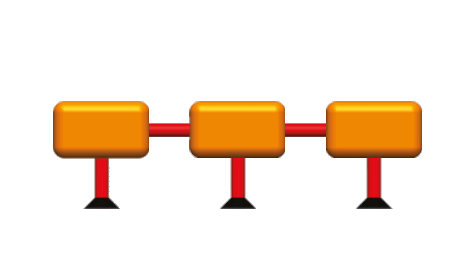Laser Welding Machine
What is laser welding?
Laser welding is a welding method that uses a high-energy laser beam. In this method, the joint areas of the workpieces are exposed to the laser beam using a laser welding machine. The laser beam focuses on a predetermined area, raising the temperature to the metal melting point in that area. During the melting process, the molecular structure at the metal joint changes, causing it to liquefy. Laser welding occurs when the evaporating gases are released as the melted metal cools and creates a welded bond.
In which areas is it used?
Laser welding technology is widely used in many industries due to its precise control and high speed. It provides sufficient penetration for sheet metal up to 10mm, and is particularly preferred for industrial applications that require high precision and for applications that require higher welding speeds, such as welding of thin sheets. Additionally, it is preferred to obtain high-quality welding results due to much less thermal damage and deformation compared to other welding methods.
Laser welding has several advantages over other welding methods:
- High precision: Laser welding provides higher precision compared to other welding methods and therefore results in higher quality welds.
- Less heat effect: Laser welding creates less heat effect compared to other welding methods. This minimizes deformation in the welding area and provides a less damaged weld.
- Automatic and fast: Laser welding is an automatic and fast welding method. Therefore, it provides faster and more efficient welding compared to other welding methods.
- Less material usage: Laser welding uses less material compared to other welding methods. This results in less waste during the welding process and a lower cost welding process.
- Environmentally friendly: Laser welding is more environmentally friendly compared to other welding methods. Therefore, it results in less waste and less environmental impact.
Environmentally friendly: Laser welding is more environmentally friendly compared to other welding methods. Therefore, it results in less waste and less environmental impact.
3 Basic functions
- Laser welding
- Laser cutting (Torch Required)
- Laser cleaning (Torch Required)
